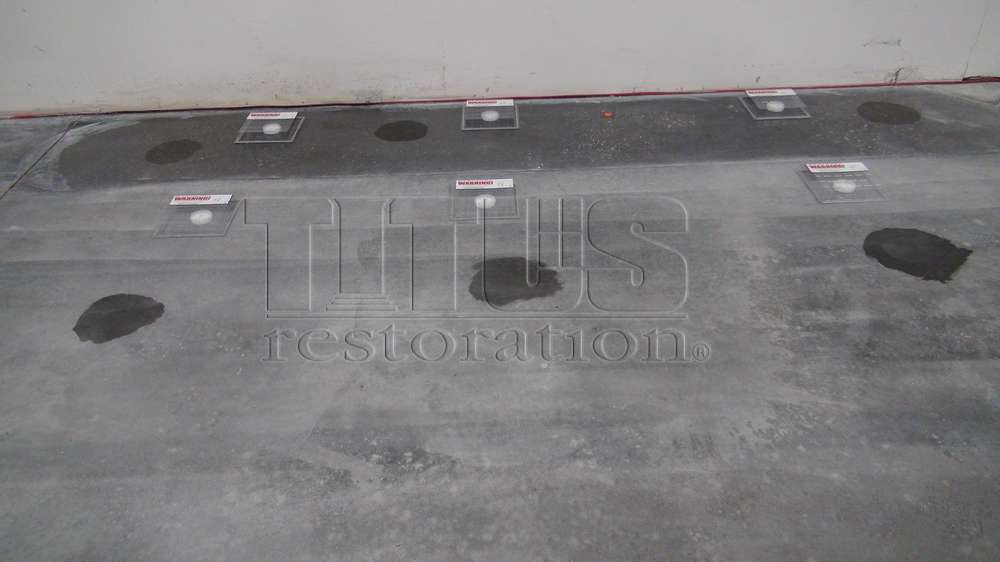Warehouses or other facilities that experience a phenomenon causing wet floors it can be a cause for concern. In some instances, the building occupant is not affected by this at all, but other times it can hinder the core business and needs to be addressed. For example, this case study was performed at a warehouse where computer components were assembled, packaged, and shipped. In this facility moisture and humidity tolerances were very low and the occupant was is desperate need of a solution for the wet floors.
Wet Concrete Floors are not always Recognized
The picture below displays a damp floor (as recognized by the dark color compared to other areas), where this trash can sat for many weeks uncovered a dry spot underneath. A simple test can be performed in this way to understand if the concrete floor is darkening due to concrete moisture.
Other mentionable conditions in this warehouse are the fact that the building was not climate controlled. No HVAC units conditioned the large warehouse and instead dock doors were left open with fans to cool the employees. The day this image was taken the relative humidity outside was 90%, it had been raining that morning,the outside pavement was still wet, and the temperature inside the building was over 72 degrees. Although the cause of the wet floors is still not understood, Titus will conduct other testing to compare to other warehouses with wet floors.
Causes of Concrete Moisture
Wet floors can be caused by:
- hydrostatic pressure
- the concrete reaching dew point
- the concrete is hygroscopic (has a tendency to absorb moisture from the atmosphere)
The technical name for a wet concrete floor is sweating slab syndrome (SSS).
Sweating slab syndrome does not necessarily occur because the slab has reached dew point, rather many times it occurs as the slab approaches dew point and is caused by the hygroscopic tendency of concrete slabs containing water soluble salts.
A water source sufficient to dissolve those salts and a pathway for those dissolved salts to reach the surface of the slab is necessary to bring the salts to the surface (top 6mm) of the concrete slab. It is these salts that absorb moisture from the atmosphere into the concrete slab and cause sweating slab syndrome.
If you want to know have more information about causes of and solutions a wet floor we discussed in depth of this phenomenon in other articles:

